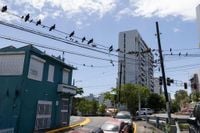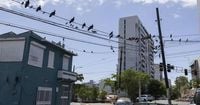The long-running saga over Puerto Rico’s massive power company debt took a dramatic turn this week, as a major agreement to slash the island’s crippling financial burden unraveled in the wake of high-profile investor defections and a shakeup of the board overseeing the territory’s finances. The collapse of the deal leaves the future of Puerto Rico’s Electric Power Authority (Prepa) — and the wallets of its residents — hanging in the balance, with experts warning of possible electricity rate hikes and renewed legal battles.
For nearly a decade, Puerto Rico’s main power utility has been mired in bankruptcy, weighed down by more than $9 billion in bonds and loans. According to Bloomberg, the financial oversight board that manages Prepa’s bankruptcy struck a deal in 2023 with investment heavyweights BlackRock Financial Management, Franklin Advisers, and Nuveen Asset Management. That agreement would have slashed the utility’s debt from roughly $9 billion to $2.6 billion — a lifeline for a territory with some of the highest electricity bills in the United States.
But on August 26, 2025, that carefully negotiated plan was thrown into jeopardy. According to the Associated Press, BlackRock and other investment funds that had previously supported the deal abruptly walked away after the Trump administration terminated all but one member of the federal control board that oversees Puerto Rico’s finances. This board, created in 2016 under the Obama administration after Puerto Rico declared itself unable to pay its more than $70 billion public debt, has been at the center of the territory’s historic municipal bankruptcy — the largest in U.S. history.
The timing of the investor exodus could not have been worse. On Monday, August 25, bondholder groups that had long opposed the oversight board’s proposals filed a court document noting that BlackRock and its allies were now joining them in a new deal set to take effect October 1. According to the filing, this enlarged coalition now holds or insures nearly 90% of all outstanding bonds issued by Puerto Rico’s power company — a formidable block with the power to shape the island’s financial future.
The reasons behind the sudden fracture are as complex as the debt negotiations themselves. The Trump administration’s decision to dismiss almost the entire oversight board has opened the door for the appointment of new members, potentially more sympathetic to hedge funds and other investors seeking full repayment of their bonds. As AP reports, experts warn that this shift could embolden those pushing for the territory to pay the full $8.5 billion some bondholders are demanding, rather than the deeply discounted $2.6 billion previously agreed upon.
For Puerto Rico’s residents, the stakes could hardly be higher. The island already suffers from some of the steepest power bills in any U.S. jurisdiction. If a new, more bondholder-friendly board pushes for full repayment, the cost could be passed on to ratepayers in the form of massive hikes to their monthly electricity bills. Earlier this year, the oversight board’s executive director put it bluntly: it was “impossible” for Puerto Rico to pay the $8.5 billion that some bondholders are seeking.
“Puerto Rico simply cannot pay what’s being demanded,” the executive director said, according to AP. “It would devastate the economy and make electricity unaffordable for families and businesses alike.”
The collapse of the debt restructuring plan has also reignited tensions among the various groups of investors. As Bloomberg details, an ad hoc group of hedge funds, traditional municipal-bond funds, and insurers have been fighting against the original deal for years, hoping to recover more of their investments. With BlackRock and Nuveen now joining their ranks, this group’s influence has grown significantly, giving them leverage to demand better terms or push for litigation.
Litigation is, in fact, looming large on the horizon. Some bondholders have called for all legal proceedings over the power company’s debt to be suspended until a new oversight board is in place. The board itself, in a brief court filing, said it prefers some processes be halted but would defer to the judge overseeing the case. It remains unclear how quickly new board members will be appointed, leaving the entire process in limbo.
The roots of Puerto Rico’s current predicament stretch back nearly a decade. In 2015, facing a mountain of more than $70 billion in public debt, the territory’s government declared it could no longer pay its obligations. The following year, Congress established the federal oversight board to manage the crisis and guide Puerto Rico through bankruptcy. Since then, the island has struggled to balance the demands of creditors, the needs of residents, and the realities of its fragile economy.
The power company’s bankruptcy has been particularly painful. Chronic underinvestment, aging infrastructure, and a string of devastating hurricanes have left Puerto Rico’s electrical grid unreliable and expensive. Residents have long complained about frequent outages and soaring bills, with many fearing that further debt payments will only make matters worse.
For investors, the situation has been equally fraught. Many bought Puerto Rican bonds at a discount, betting that a court-supervised restructuring would yield a healthy return. Others, including large municipal-bond funds and insurers, have pushed for a more generous settlement, arguing that the oversight board’s proposed cuts were too steep. The recent shakeup has only intensified these divisions, with each side jockeying for position as the next phase of negotiations looms.
Amid the uncertainty, one thing is clear: the path forward will not be easy. The collapse of the restructuring deal has left Puerto Rico’s government, its residents, and its creditors facing a fresh round of uncertainty. With nearly 90% of bondholders now aligned in opposition to the previous agreement, the prospect of a quick resolution appears remote.
Some observers worry that the current stalemate could drag on for months, if not years, as new board members are appointed and fresh negotiations begin. Others fear that the courts could ultimately decide the matter, leading to unpredictable outcomes and prolonged instability for Puerto Rico’s power sector.
For now, the people of Puerto Rico can do little but wait — and hope that the next chapter in this long-running saga brings relief, not more hardship. As one resident put it, “We just want affordable, reliable electricity. Is that too much to ask?”
With so much at stake, all eyes will be on the island as it navigates the treacherous waters of debt restructuring, investor demands, and political upheaval. The outcome will not only shape Puerto Rico’s financial future but could also set a precedent for how U.S. territories and municipalities handle their own fiscal crises in the years to come.


